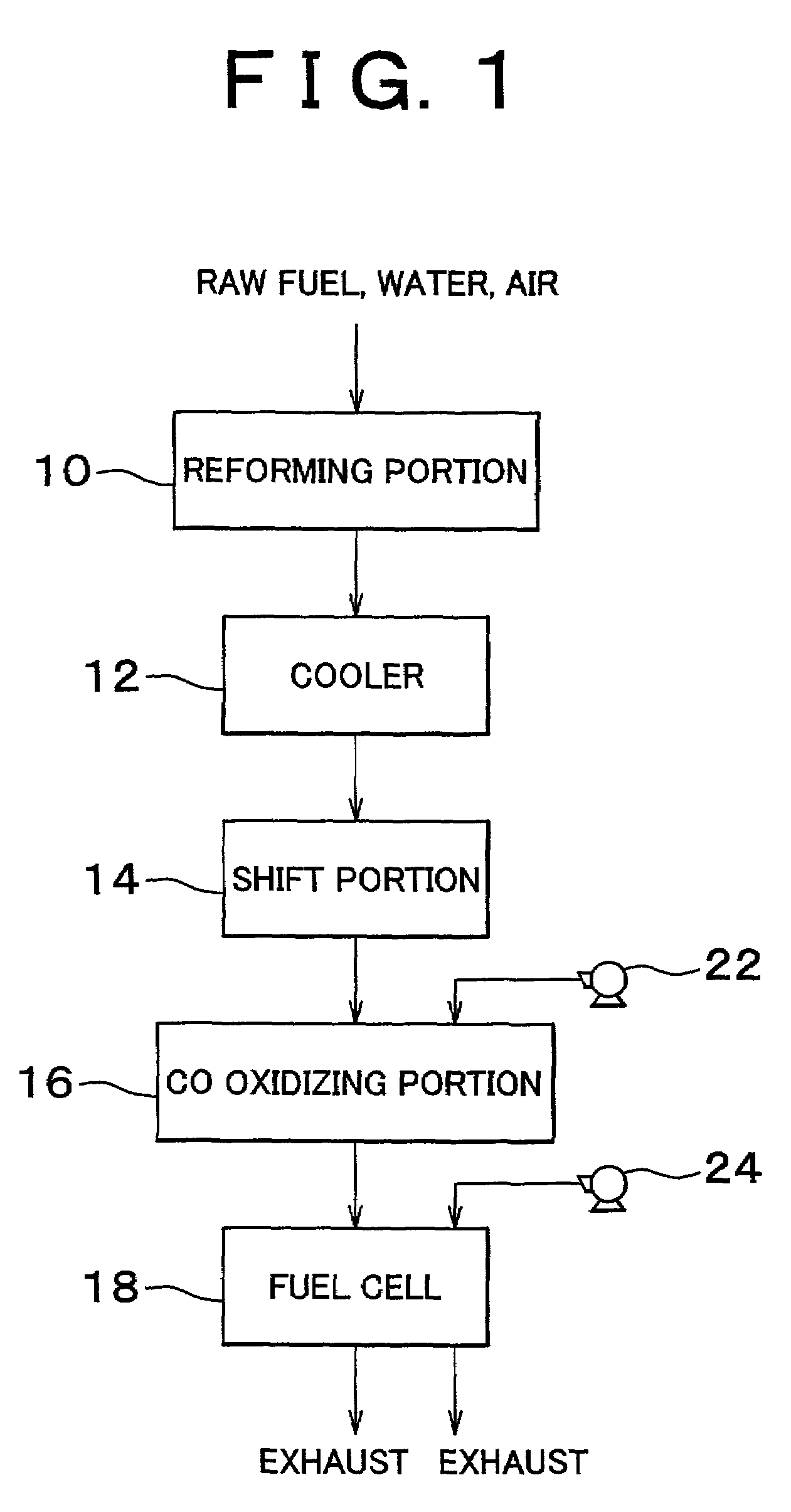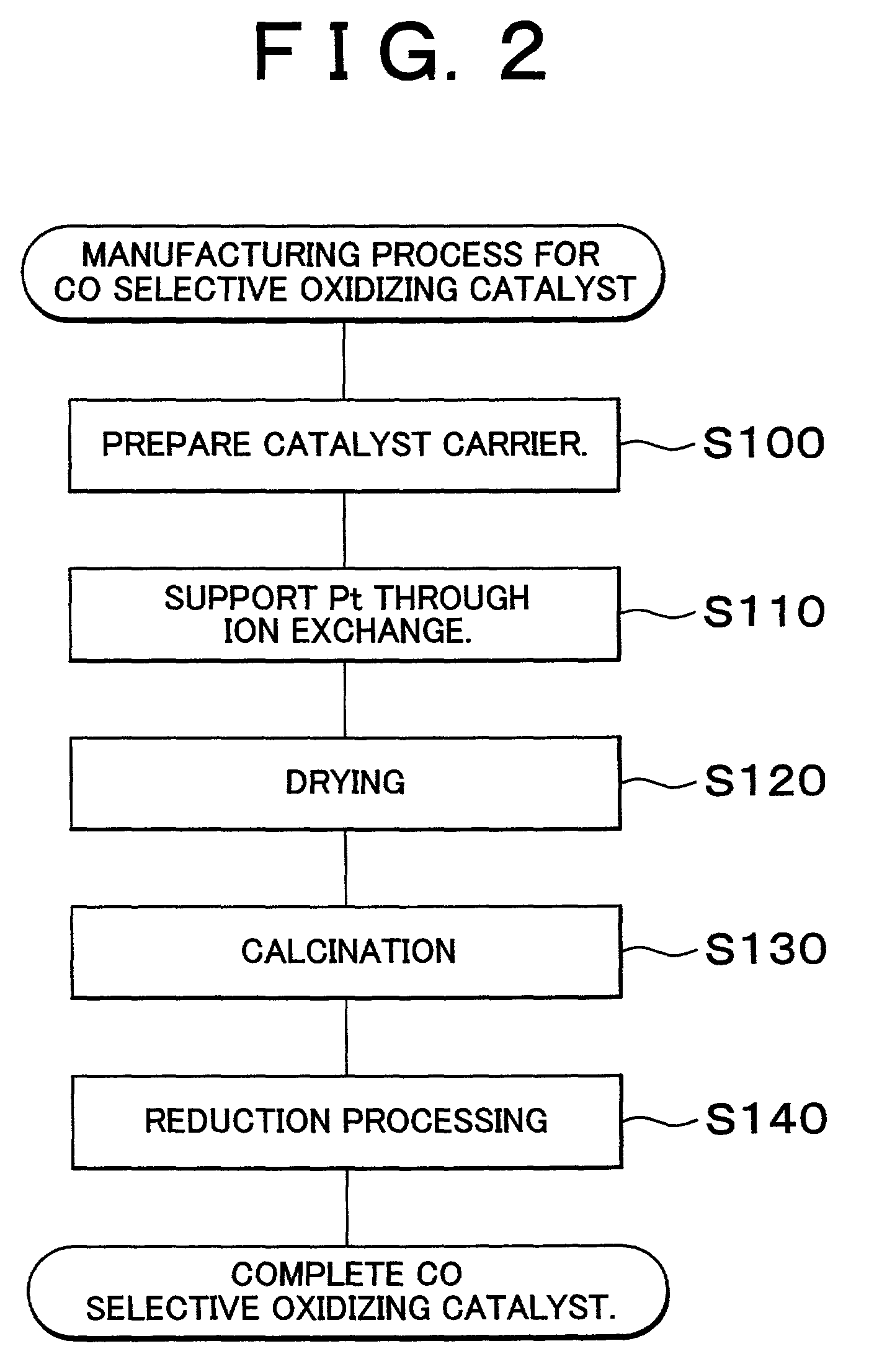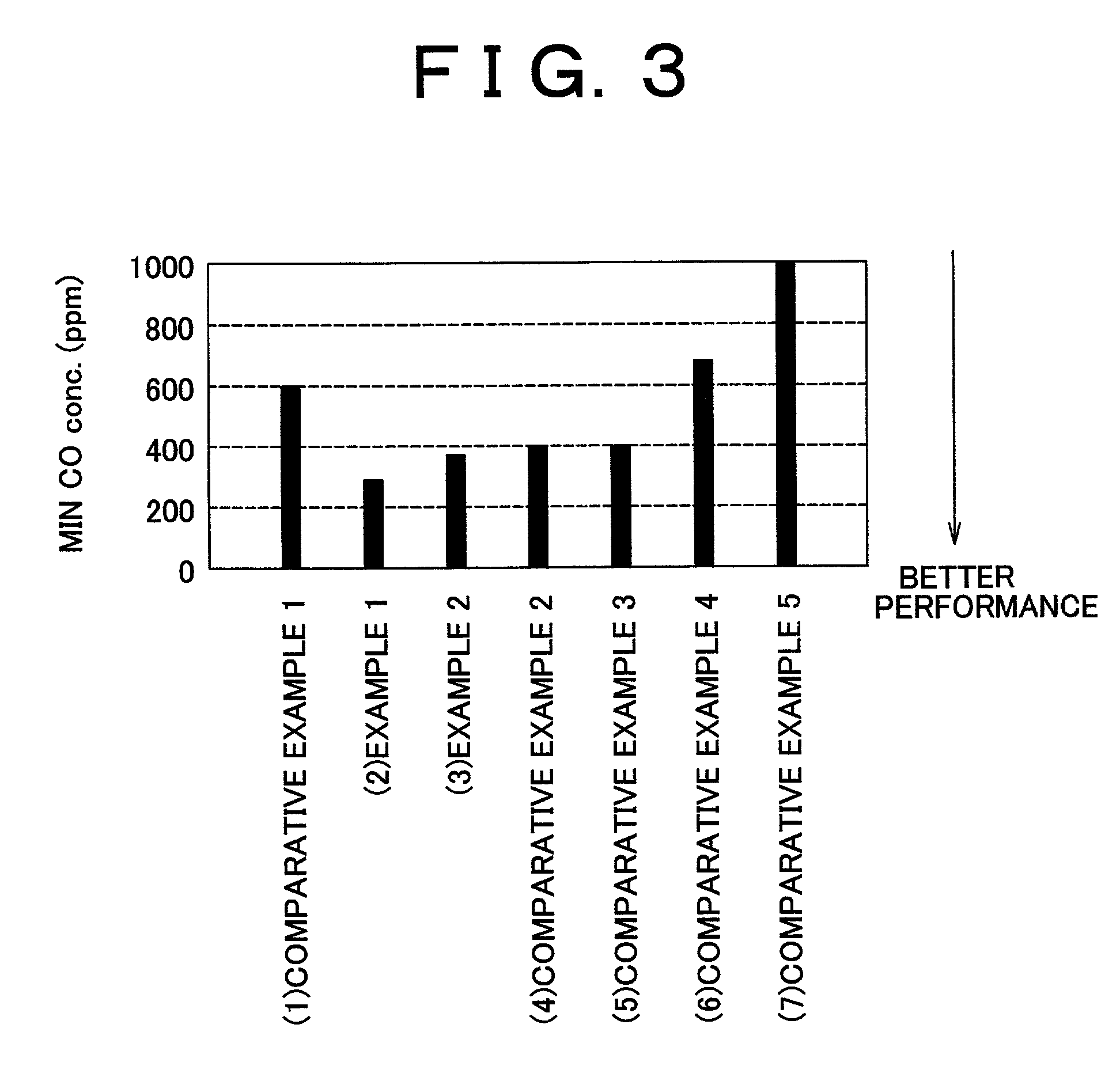Carbon monoxide selective oxidizing catalyst and manufacturing method for the same
a technology of carbon monoxide and catalyst, which is applied in the direction of physical/chemical process catalyst, sustainable manufacturing/processing, and separation processes, etc., can solve the problems of reducing the efficiency of reducing the concentration of carbon monoxide in the fuel gas supplied to the fuel cell, affecting the performance of the cell, and affecting the efficiency of reducing the concentration of carbon monoxid
- Summary
- Abstract
- Description
- Claims
- Application Information
AI Technical Summary
Benefits of technology
Problems solved by technology
Method used
Image
Examples
examples 1 , 2
(A) EXAMPLES 1, 2
[0072]In Examples 1 and 2, a carrier including ferrierite or ZSM-5 was used in a carbon monoxide selective oxidizing catalyst provided with Pt. The carbon monoxide selective oxidizing catalysts (1) to (7) described below were compared in terms of catalytic performance. The catalysts (1) to (7) are listed in ascending order in terms of the pore diameter in the carrier.
[0073](1) Comparative Example 1: A catalyst in which Pt was supported on an A-type zeolite carrier [Pt (3 wt %) / A];[0074](2) Example 1: A catalyst in which Pt was supported on a ferrierite carrier [Pt (3 wt %) / Fer];[0075](3) Example 2: A catalyst in which Pt was supported on a ZSM-5 carrier [Pt (3 wt %) / ZSM-5];[0076](4) Comparative Example 2: A catalyst in which Pt was supported on a mordenite carrier [Pt (3 wt %) / Mor];[0077](5) Comparative Example 3: A catalyst in which Pt was supported on a zeolite β carrier [Pt (3 wt %) / β];[0078](6) Comparative Example 4: A catalyst in which Pt was supported on a USY...
examples 3 to 7
(B) EXAMPLES 3 to 7
[0092]In Examples 3 through 7, in carbon monoxide selective oxidizing catalysts using ferrierite as carriers thereof, various types of transition metals were supported on the carriers in addition to Pt. In a catalyst in Example 3, iron (Fe) was supported on a ferrierite carrier together with Pt. In a catalyst in Example 4, nickel (Ni) was supported on a ferrierite carrier together with Pt. In a catalyst in Example 5, cobalt (Co) was supported on a ferrierite carrier together with Pt. In a catalyst in Example 6, manganese (Mn) was supported on a ferrierite carrier together with Pt. In a catalyst in Example 7, copper (Cu) was supported on a ferrierite carrier together with Pt.
[0093]In the cases of the catalysts in Examples 3 through 7, steps S100 and S110 in the manufacturing process shown in FIG. 2 were performed to support Pt on the ferrierite carriers. Then, drying and calcination were performed on the carriers on which Pt was supported in steps S120 and S130. Fu...
examples 8 to 11
(C) EXAMPLES 8 to 11
[0098]In Examples 8 through 11, the content of Fe supported on the carrier together with Pt was changed. FIG. 7A shows the results in the case where the above-mentioned catalyst in Example 1 (FIG. 6B) was used and the molar ratio of Pt to Fe in Example 1 was 3:0 (no Fe). FIG. 7B shows the results in the case where the catalyst in Example 8 was used, and the molar ratio of Pt to Fe was 3:0.2 (the molar ratio value between Pt and Fe is 15). FIG. 7C shows the results in the case where the catalyst in Example 9 was used, and the molar ratio of Pt to Fe was 3:0.5 (the molar ratio value between Pt and Fe is 6). FIG. 8A shows the results in the case where the catalyst in Example 10 was used, and the molar ratio of Pt to Fe was 3:1.0 (the molar ratio value between Pt and Fe is 3). FIG. 8B shows the results in the case where the catalyst in Example 11 was used, and the molar ratio of Pt to Fe was 3:2.0 (the molar ratio value between Pt and Fe is 1.5). The catalyst in Exam...
PUM
| Property | Measurement | Unit |
|---|---|---|
| pore diameter | aaaaa | aaaaa |
| pore diameter | aaaaa | aaaaa |
| temperature | aaaaa | aaaaa |
Abstract
Description
Claims
Application Information
 Login to View More
Login to View More - R&D
- Intellectual Property
- Life Sciences
- Materials
- Tech Scout
- Unparalleled Data Quality
- Higher Quality Content
- 60% Fewer Hallucinations
Browse by: Latest US Patents, China's latest patents, Technical Efficacy Thesaurus, Application Domain, Technology Topic, Popular Technical Reports.
© 2025 PatSnap. All rights reserved.Legal|Privacy policy|Modern Slavery Act Transparency Statement|Sitemap|About US| Contact US: help@patsnap.com



